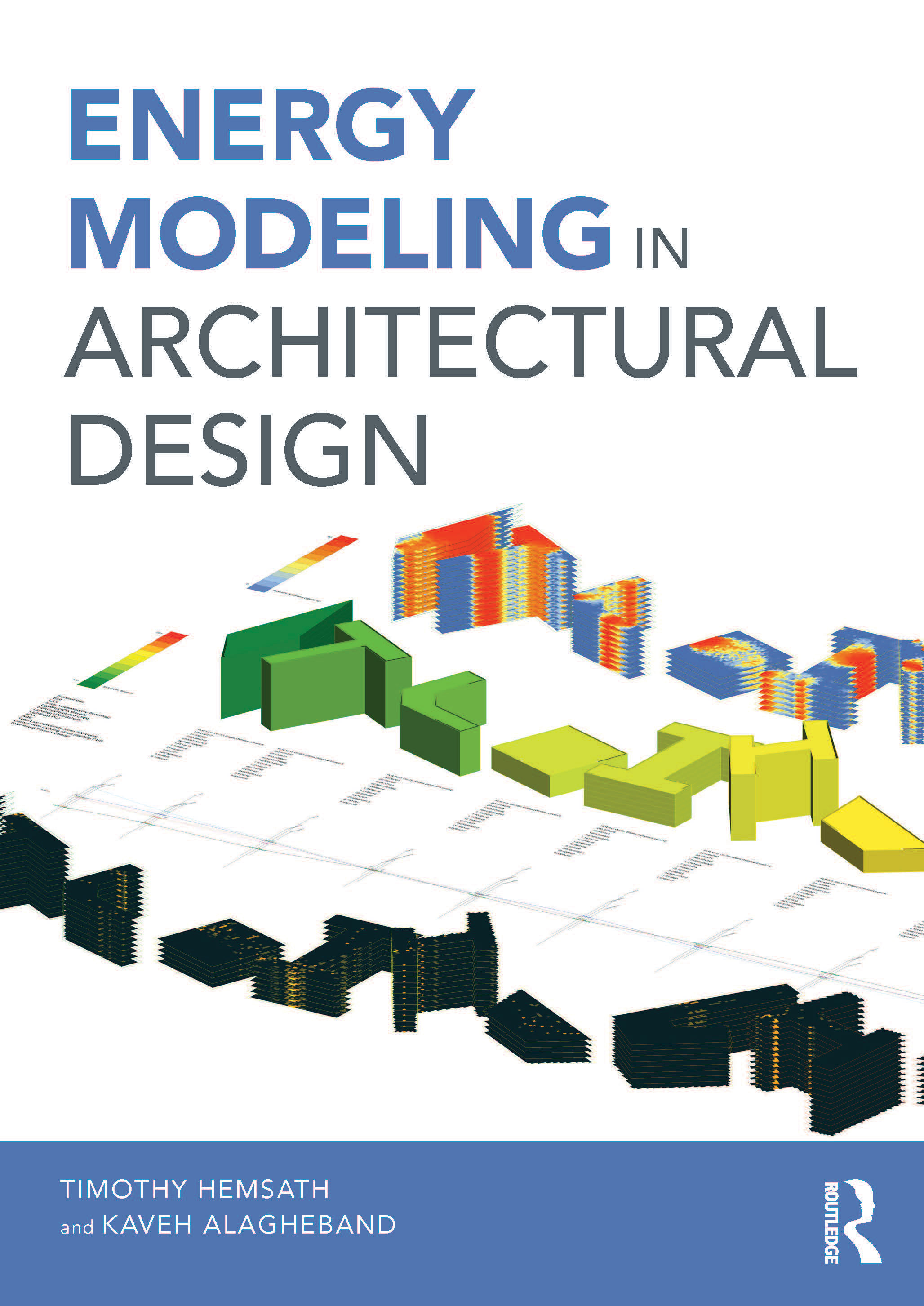The College of Architecture from the University of Nebraska-Lincoln (UNL) is pleased to announce Associate Professor Timothy Hemsath and architectural doctoral candidate Kaveh Alagheh Bandhosseini have published through Routledge an insightful, research-driven book packed with hundreds of simulated illustrations entitled “Energy Modeling in Architectural Design”.
This ground-breaking book provides the reader with detailed energy-saving, design methods and resources for simulation in architectural design. While there have been other books and journals that have included parametrically-driven building forms for energy simulations in architectural design; they are often limited to a single climate and residential design. This book takes energy-efficient designs to a new level.
“We explored three different offices sizes in three different U.S. climate zones, and we coupled newer lighting metrics with energy simulations which is extremely novel,” stated Hemsath.
Using research proven methods, Hemsath and Bandhosseini detail how to use design elements and the identification of climate opportunities to create energy savings and help reduce the energy footprint of new buildings. From project conception, the authors demonstrate how to utilize important fundamental passive design elements for software-agnostic energy modeling. The book also provides a step by step guide to creating and testing parametric models for a structure that is not only beautiful but high-performance and efficient.
Artfully illustrated with more than 100 color images, this book includes a pattern guide for high-performance buildings. These illustrations are a small representation of the thousands created during their research using the Holland Computing Center.
“Hemsath and Bandhosseini have delivered a timely and informative introduction to building energy modeling. Energy modeling has become an essential tool for modern architects to understand when designing high-performance buildings. This book is richly illustrated and provides vital information that will assist architects in making energy saving design decisions,” commented Jason Glazer, P.E., BEMP; principal engineer at GARD Analytics Inc. and chair of ASHRAE Standard 209.
Leading energy experts concur, “Understanding the energy consequence of architectural design decisions is the foundation for high-performance design. The authors of “Energy Modeling in Architectural Design” provide the framework for all architects to effectively use energy modeling as a design tool,” said Tom Hootman, AIA, LEED AP, WELL AP, author of “Net Zero Energy Design”.
A copy of “Energy Modeling in Architectural Design” can also be found on Amazon.com

 Study Architecture
Study Architecture  ProPEL
ProPEL 
